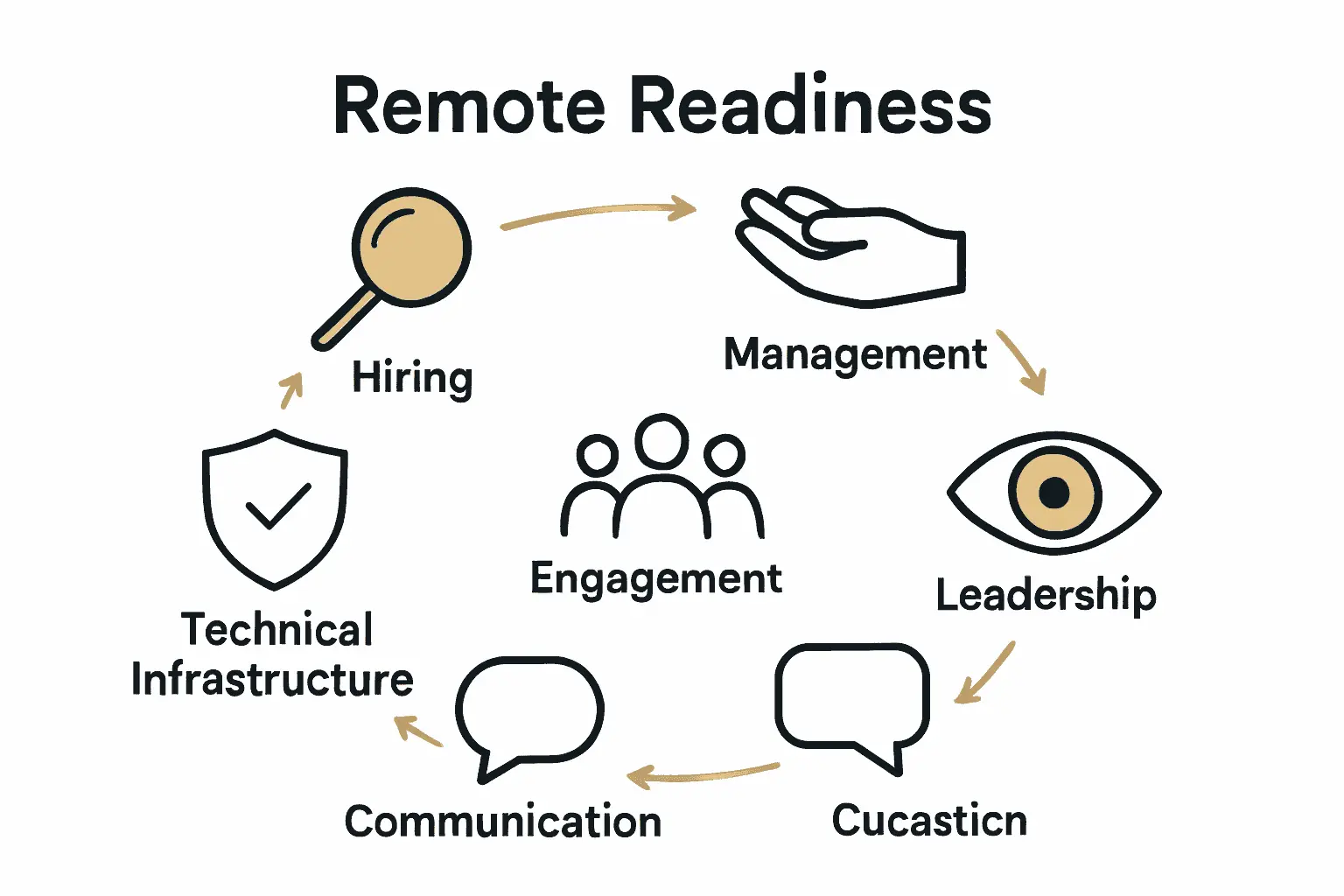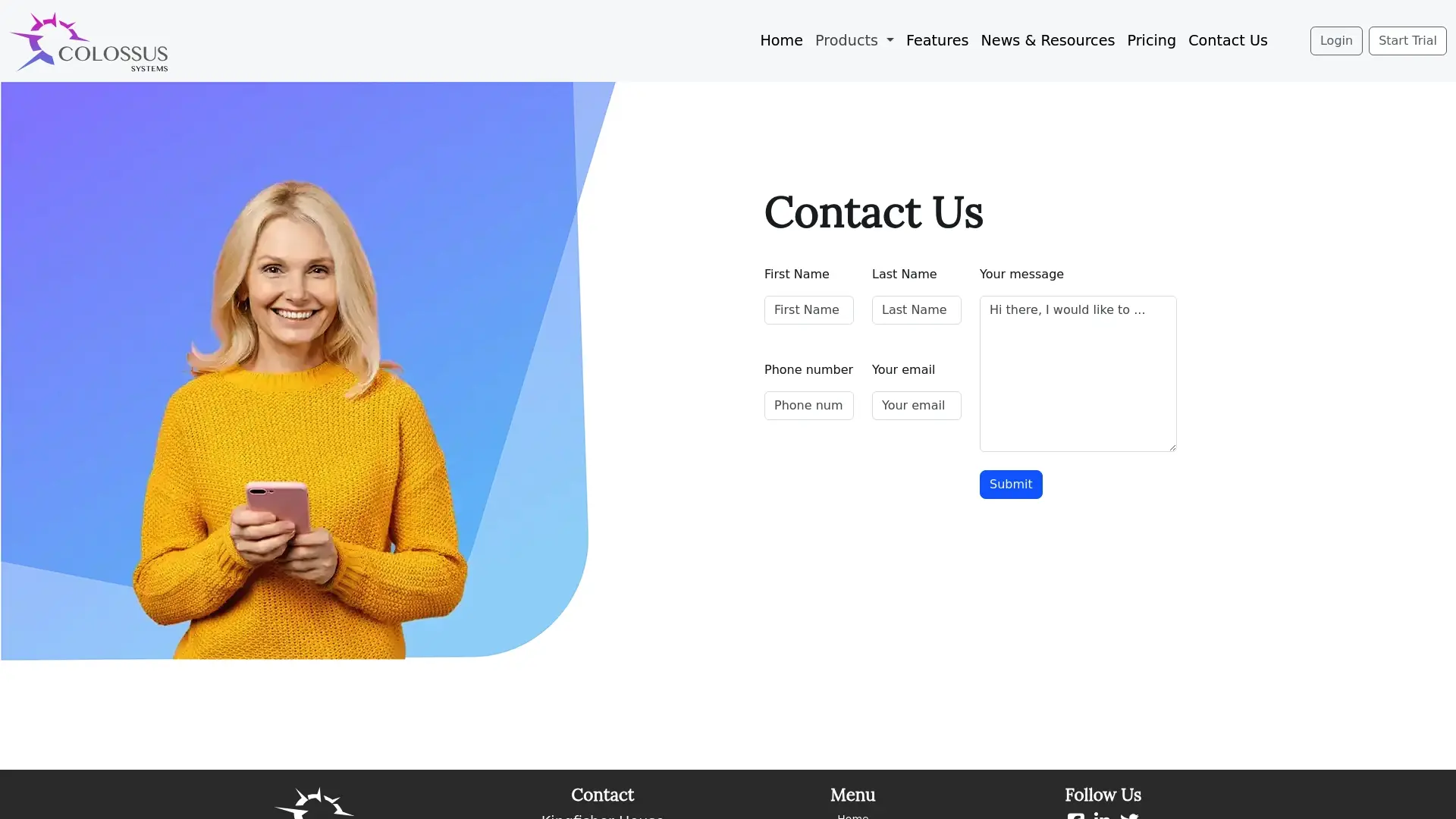Remote Work Productivity Tips for Membership Organizations

Nearly 60 percent of organizations report facing unexpected challenges when shifting to remote work. Adapting to these new demands can feel overwhelming, especially for membership organizations used to in-person collaboration. By identifying where your team stands on remote readiness, you can reveal both hidden roadblocks and untapped strengths. With thoughtful planning and the right tools, your organization can support a connected, productive, and resilient remote culture.
Quick Summary
| Key Point | Explanation |
|---|---|
| 1. Assess remote work readiness | Evaluate hiring practices, management, and tools to understand your organization’s remote work potential. |
| 2. Implement collaboration tools | Equip your team with effective tools like Zoom, Slack, and Asana to enhance communication and project management. |
| 3. Establish clear communication channels | Set a regular meeting schedule and define communication norms to ensure everyone stays informed and connected. |
| 4. Streamline workflows for productivity | Use visual project management and define core work hours to clarify priorities and improve efficiency. |
| 5. Monitor productivity and optimize processes | Focus on outcomes and establish performance metrics to continuously enhance team productivity and work quality. |
Table of Contents
- Step 1: Assess Current Remote Work Readiness
- Step 2: Implement Essential Collaboration Tools
- Step 3: Establish Clear Communication Channels
- Step 4: Streamline Workflows For Remote Teams
- Step 5: Monitor Productivity And Optimize Processes
Step 1: Assess current remote work readiness
Getting your membership organization ready for effective remote work starts with a comprehensive assessment of your current capabilities. Learn more about managing remote teams to set a strong foundation.
According to Toptal’s Remote Work Readiness Model, organisations need to examine six critical areas: hiring practices, management approaches, team engagement strategies, remote leadership, communication tools, and technical infrastructure. Think of this assessment as a detailed health check for your organisation’s remote work potential.
Here’s a summary of the six key dimensions for remote work readiness assessment:

| Dimension | What to Evaluate | Example Indicators |
|---|---|---|
| Hiring practices | Remote suitability, flexibility | Clear remote criteria Onboarding process |
| Management approaches | Support, empathy | Open feedback Manager accessibility |
| Team engagement strategies | Inclusion, motivation | Virtual events Team feedback channels |
| Remote leadership | Visibility, transparency | Regular updates Visible decision-making |
| Communication tools | Effectiveness, accessibility | Tool integration Ease of use |
| Technical infrastructure | Reliability, security | Stable VPN Device compatibility |
Start by gathering your leadership team and conducting an honest evaluation across these key dimensions. You want to determine whether your organisation is at the beginning, transitioning, developing, or thriving stage of remote work readiness. This isn’t about passing or failing but understanding your current strengths and potential improvement areas.
A robust remote work culture assessment involves deeply examining communication channels, building trust, ensuring inclusion, streamlining processes, and evaluating leadership visibility. Consider creating a scoring mechanism that helps you objectively rate each dimension. Look for transparency in leadership communication, empathy in management approaches, and the quality of your existing collaboration tools.
Pro Tip: Be brutally honest during this assessment. Recognising limitations is the first step towards meaningful improvement.
Practical steps include surveying your team about their remote work experiences, reviewing current technology infrastructure, and identifying potential training needs. Pay special attention to how information flows across your organisation and where potential communication bottlenecks might exist.

Once you complete this assessment, you will have a clear roadmap of your remote work readiness. Your next step will involve developing targeted strategies to address any identified gaps and strengthen your organisation’s remote work capabilities.
Step 2: Implement essential collaboration tools
Now that you have assessed your remote work readiness, it is time to equip your membership organization with powerful collaboration tools that will transform how your team works together. Explore creative team building strategies to complement your technological approach.
According to research from DigitalOcean, selecting the right collaboration tools involves considering security, scalability, and specific team needs. Key tools like Zoom for video conferencing, Slack for communication channels, and Asana for project management can dramatically improve remote team productivity.
Start by evaluating your team communication requirements. Video conferencing platforms like Zoom provide critical face to face interaction for remote teams. Look for features that support screen sharing, breakout rooms, and recording capabilities. These tools help recreate the spontaneous interactions typical of in person workspaces.
For ongoing team collaboration, communication platforms such as Slack offer integrated channels where team members can share updates, discuss projects, and maintain transparent workflows.
Consider tools that allow seamless file sharing, threaded conversations, and integration with other work management software.
Pro Tip: Choose tools that offer robust security features and integrate smoothly with your existing technology infrastructure.
Project management tools like Asana enable task tracking, workload distribution, and comprehensive reporting. These platforms help your team stay aligned on goals, track progress, and maintain accountability even when working remotely.
Remember that implementing new tools requires a thoughtful change management approach. Provide training sessions, create user guides, and offer ongoing support to help your team adapt to new collaboration technologies.
Your next step will involve establishing clear communication protocols and expectations around these new collaboration tools to ensure smooth and effective remote work interactions.
Step 3: Establish clear communication channels
With your collaboration tools in place, the next critical step is creating a communication framework that keeps your remote membership organization connected and aligned. Read about building resilience in remote teams to support your communication strategy.
According to research from Purple Planet, effective remote communication requires consistent scheduling and thoughtful approaches that accommodate different time zones and working styles. Regular check-ins are not just meetings but opportunities to maintain team cohesion and organizational transparency.
Begin by establishing a predictable meeting rhythm that works across your team. This means setting regular team meetings, one-on-one check-ins, and project-specific discussions with clear agendas. Video conferencing adds a personal touch that helps combat the isolation often experienced in remote work environments. Seeing colleagues face to face rebuilds the informal connections lost when working separately.
Create structured communication norms that define how and when different communication channels should be used. For instance, urgent matters might require an immediate video call, while project updates could be shared through project management platforms. This clarity prevents communication confusion and ensures everyone understands expectations.
Pro Tip: Document your communication guidelines and make them easily accessible to all team members.
Research from Mind Manager suggests developing an intentional onboarding process that introduces new team members to communication conduct policies and tool usage norms. This approach helps create a consistent communication culture where everyone understands how to interact effectively.
Consider fostering connections beyond pure project work. Virtual coffee breaks, informal chat channels, and team building activities can help maintain the social fabric of your organization. These interactions build trust and create a sense of community that transcends physical distance.
Your next step involves monitoring and continuously refining these communication channels to ensure they remain effective and responsive to your team’s evolving needs.
Step 4: Streamline workflows for remote teams
Now it is time to transform your remote team operations into a well-oiled machine that maximizes productivity and collaboration. Discover effective time management strategies to support your workflow optimization efforts.
According to research from Monday.com, creating dedicated virtual workspaces with logical organization is fundamental to smooth remote operations. This means developing clear digital environments where team members can easily track projects, understand priorities, and maintain transparency.
Start by implementing visual project management tools that offer multiple view options. Platforms like Trello and Asana allow teams to see work through Gantt charts, Kanban boards, and comprehensive dashboards. These visual representations help everyone understand project progress at a glance and identify potential bottlenecks before they become significant issues.
Research from Mold Studio emphasizes the importance of defining core work hours and using strategic prioritization frameworks. The Eisenhower Matrix can be particularly helpful in categorizing tasks based on urgency and importance. This approach ensures that your team focuses on high impact work while managing day to day responsibilities effectively.
Pro Tip: Automate repetitive tasks wherever possible to free up your team for more strategic work.
Regular stand-up meetings and consistent feedback loops are critical for maintaining workflow momentum. These short, focused meetings help teams synchronize efforts, discuss challenges, and maintain a sense of collective progress. Virtual stand-ups should be concise, structured, and provide clear action items for team members.
Consider implementing workflow automation tools that can handle routine administrative tasks. Automatic task assignments, progress tracking, and notification systems can significantly reduce manual coordination efforts and minimize communication overhead.
Your next step involves continuously monitoring and refining these workflow processes to ensure they remain adaptive and responsive to your organization’s evolving needs.
Step 5: Monitor productivity and optimize processes
With your remote work infrastructure in place, it is time to develop a strategic approach to measuring and improving team performance. Learn about building team resilience to support your productivity optimization efforts.
According to research from We360.ai, implementing robust productivity measurement frameworks is crucial for understanding remote team performance. Objective and key results (OKRs), value creation assessments, and balanced scorecards provide comprehensive ways to align productivity with meaningful organizational outcomes.
Begin by shifting your perspective from tracking activity hours to measuring tangible results. Project management systems like Asana and Trello can help you track project completion rates, while time tracking tools offer insights into how work actually happens. The goal is understanding work patterns without creating a culture of constant surveillance.
ActivTrak research suggests focusing on outcome metrics rather than micromanaging every minute of work. This means establishing clear performance indicators that reflect actual value creation. Look beyond simple time logged and examine the quality of work completed, project milestones achieved, and strategic contributions made by team members.
Pro Tip: Balance quantitative metrics with qualitative feedback to get a holistic view of team performance.
Regular supportive check-ins are essential for maintaining team motivation and identifying potential bottlenecks. These conversations should be constructive dialogues that explore challenges, celebrate achievements, and collaboratively develop improvement strategies.
Consider analyzing the balance between idle and focus time to understand productivity patterns. This doesn’t mean penalizing breaks but rather understanding how work rhythms impact overall team performance. Some team members might have different peak productivity periods that require flexible management approaches.
Your final step involves creating a continuous improvement cycle where productivity insights drive strategic adjustments to your remote work processes.
Transform Remote Work Challenges into Growth for Your Membership Organisation
Struggling to maintain productivity and seamless member engagement while your team works remotely? The article has shown how issues like inefficient communication, unclear workflows, and fragmented collaboration tools can stunt your membership organisation’s growth. If you recognise your own challenges in evaluating remote work readiness, setting up essential collaboration tools, or optimising digital processes, you are not alone. Many membership-based organisations face these hurdles, which can lead to missed opportunities for member engagement and revenue growth.

Ready to see real results? Explore how Colossus Systems brings all your vital workflows into one unified platform, tailored for membership organisations like yours. Whether you need better event management, streamlined communication, or comprehensive reporting to boost your remote work efficiency, we have you covered. Take the first step to empower your team and delight your members—visit Contact Us now and discover a solution that is designed for your remote productivity challenges. Act now to transform your organisation’s remote work experience and achieve sustainable growth.
How can I assess my organization’s readiness for remote work?
To assess your organization’s remote work readiness, evaluate six critical areas: hiring practices, management approaches, team engagement strategies, remote leadership, communication tools, and technical infrastructure. Start by gathering your leadership team to conduct a thorough review of these dimensions and identify areas for improvement within 30 days.
What essential collaboration tools should my membership organization implement for remote work?
Your membership organization should consider implementing tools for video conferencing, communication, and project management. Evaluate your team’s specific needs and select tools that integrate well with your existing setup and provide robust security features within the next 45 days.
How can I establish effective communication channels for a remote team?
To create effective communication channels, establish a schedule for regular team meetings, one-on-one check-ins, and project discussions, ensuring agendas are clear. Document your communication guidelines and share them with all team members to foster transparency within the first month.
What steps can I take to streamline workflows for my remote team?
Streamlining workflows involves creating dedicated virtual workspaces and employing visual project management tools. Implement frameworks like the Eisenhower Matrix to prioritize tasks, and automate repetitive processes to improve productivity noticeably within a few weeks.
How should I monitor productivity in a remote work environment?
Monitor productivity by shifting from tracking hours to measuring tangible results through performance indicators such as project completion rates. Conduct regular supportive check-ins to identify challenges and celebrate achievements, aiming for continuous improvement every month.
What can I do to improve team engagement in a remote work setting?
Improving team engagement can be achieved by hosting virtual social events, casual chat channels, or team-building activities, thus maintaining a sense of community. Aim to implement at least one new engagement activity every two weeks to strengthen team bonds.
Recommended
- Understanding Managing Remote Teams: Key Concepts Explained|CS
- 8 Creative Remote Team Building Ideas for Your Organisation|CS
- Industry News
- Improving Member Engagement: Proven Strategies for 2025|CS
- Advanced Strategies for Leading Remote Teams - Berriault and Associates Consulting Group
- 8 Essential Remote Work Productivity Tools for 2025